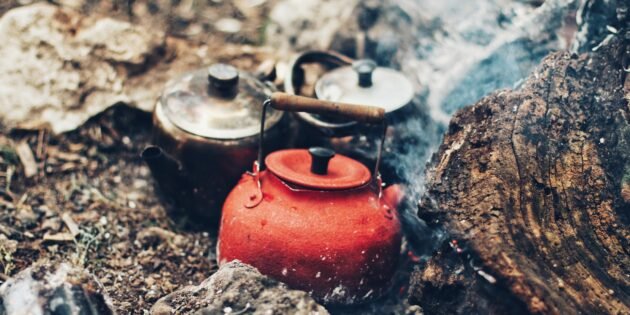Boiling is the process of vapor formation when a sufficiently heated liquid begins to turn into a gaseous state. Actually, because of this, bubbles are obtained.
It is necessary to boil water for different purposes, and if you do not bring it to the right condition, dangerous bacteria may remain in it, and the taste of dishes and drinks will differ from what was intended.
At normal atmospheric pressure at sea level, water boils Melting Point, Freezing Point, Boiling Point / when heated to 100 °C. In the mountains at an altitude of one and a half kilometers, this figure may be lower — somewhere 95 ° C, at three kilometers ‑ 90 ° C.
But in general, how to install C. D. Ericsson. Water Disinfection for International and Wilderness Travelers / Clinical Infectious Diseases specialists of the California Department of Health in Berkeley, altitude above sea level does not significantly affect the disinfection process. So you can not calculate anything and focus on 100 ° C.
For reliable water purification, it is traditionally recommended to keep it heated to 100 ° C for 10 minutes, but scientists believe C. D. Ericsson. Water Disinfection for International and Wilderness Travelers / Clinical Infectious Diseases that this is unnecessary, because most pathogens die already at temperatures above 60 °C. The US Centers for Disease Control and Prevention indicates Boil Water Advisory | Water, Sanitation, & Hygiene‑related Emergencies & and Outbreaks / CDC that boiling water is quite enough for 1 minute — this is already enough to clean it from potential pathogens. Well, or 3 minutes if you are high in the mountains.

We figured out the numbers, but how do you know that the water is boiling if you have a very ordinary kettle without a thermometer and there is no stopwatch on your hands? Fortunately, it is quite simple to determine whether the water is boiling or not without appliances.
This process can be broken down Everything You Ever Wanted to Know (Plus More!) About Boiling Water / The Food Lab into several stages that are visually distinguishable. Different stages of boiling water are needed for different culinary purposes.
1. Heating. The surface of the water trembles slightly, small bubbles form at the bottom and at the walls of the kettle or pan, which do not rise to the surface yet — the water is warmed up to about 60-75 ° C. At this temperature, cooks prepare fruits, fish, poached eggs and boil tender meat.
2. Boiling. Trickles of bubbles begin to rise to the surface, but the water column is not moving yet. The water looks like champagne in a glass. The temperature is 75-90 °C. Suitable range for cooking broths, stews, stewing meat.
3. Slow boiling. A lot of bubbles rise to the surface — not in separate streams, as in the previous stage, but over the entire area of water. The temperature is 90-100 °C. You can cook vegetables steamed , and in a dipper submerged in water — hot chocolate and Hollandaise sauce. Well, or just boil the milk.
4. Violent boiling. The water is boiling, a lot of steam rises above the pot or kettle. The temperature is 100 °C. In such water, you can throw pasta or blanch vegetables in it. It is also suitable for brewing tea.
Guided by these external signs, you can easily tell whether the water is boiling or not.